In Chapter 1, page 10, I refer to the original, massive 20-foot by 35-foot garrison flag kept in the display case at Fort Sumter’s Liberty Square Visitor Center. Major Anderson brought the flag when he evacuated his command from Fort Moultrie to Fort Sumter on the night of December 26, 1861. Raised at noon the following day, strong winds tore the flag on April 11, 1861, a day before the Civil War’s first shots directed at the island fort. The smaller 10-foot by 20-foot storm flag, now in display at the museum in Fort Sumter, replaced the garrison flag for the two-day bombardment. These flags had 33 stars, rather than 34 stars as stated in the book. The 34-star flag would not become the standard for almost three more months, on July 4, 1861, marking Kansas’s admission to the union. Federal forces carried the 34-star flag into combat for the war’s first two years, and fought under the 35-star banner for the last two years of the war, from July 4, 1863 after West Virginia’s separation from the state of Virginia and admission to the union.
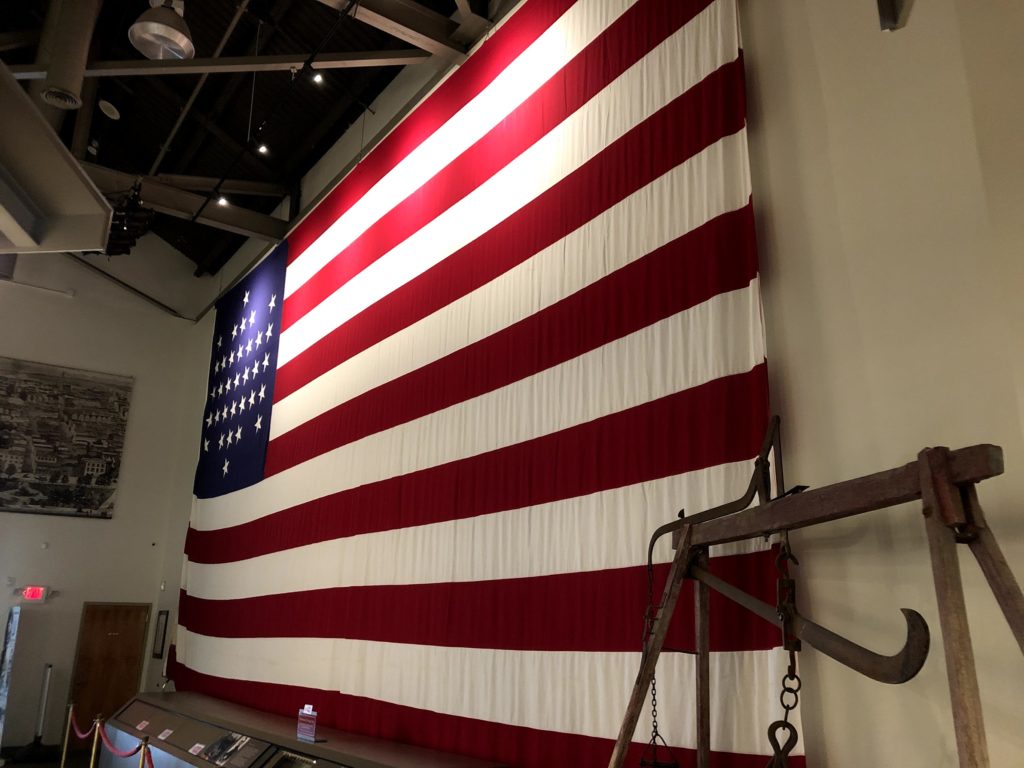
A replica of the 20′ x 35′ garrison flag that flew above Fort Sumter from December 27, 1861 until April 11, 1861 hangs in the Liberty Square VC above a customized, protective case holding the original.
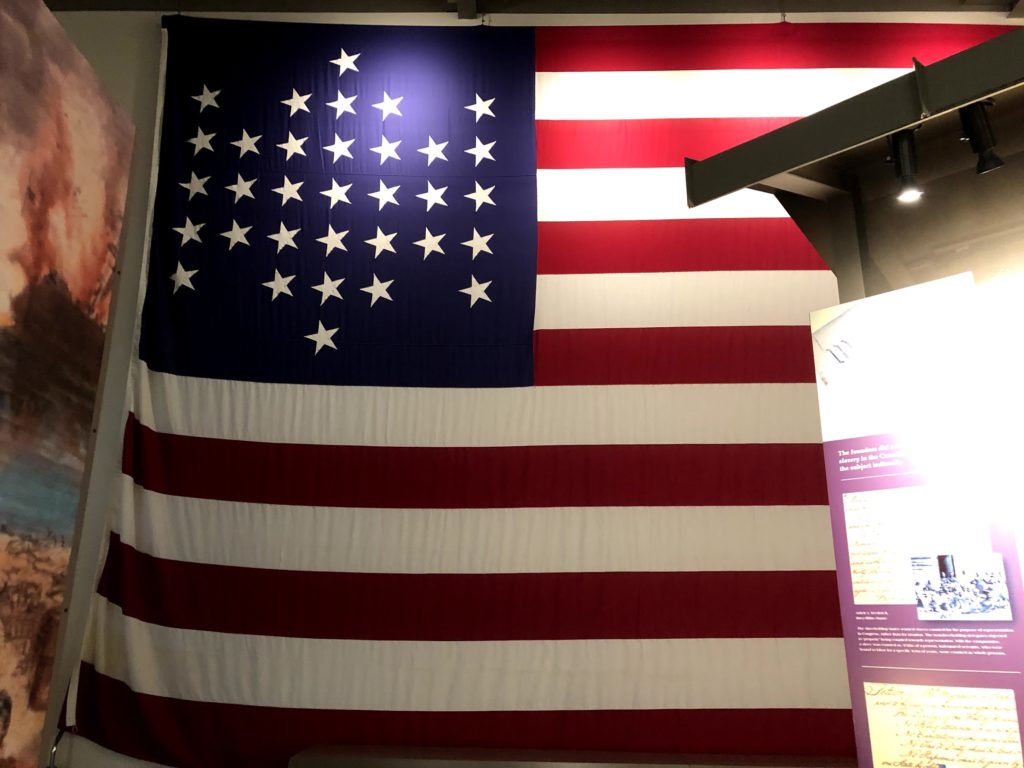
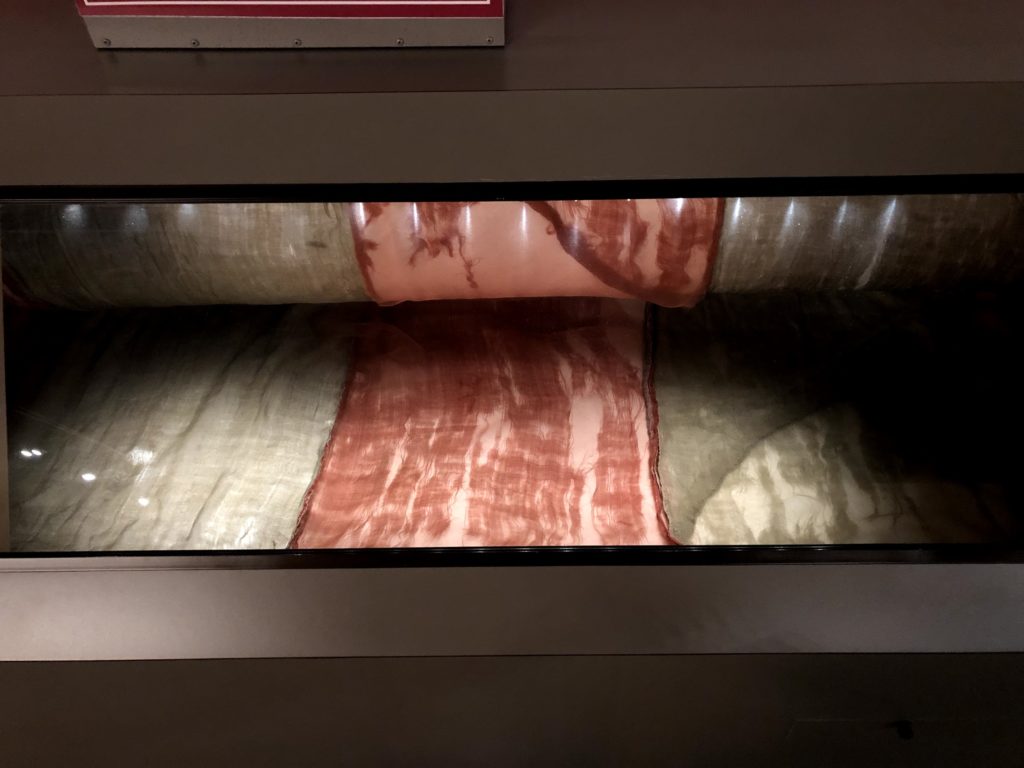 Anderson took this garrison flag with him and the family kept it until transferring it to the War Department in 1905. The National Park Service took possession of both the garrison and storm flags in 1954, returning them to their proper home in Charleston where they remain today.
Anderson took this garrison flag with him and the family kept it until transferring it to the War Department in 1905. The National Park Service took possession of both the garrison and storm flags in 1954, returning them to their proper home in Charleston where they remain today.
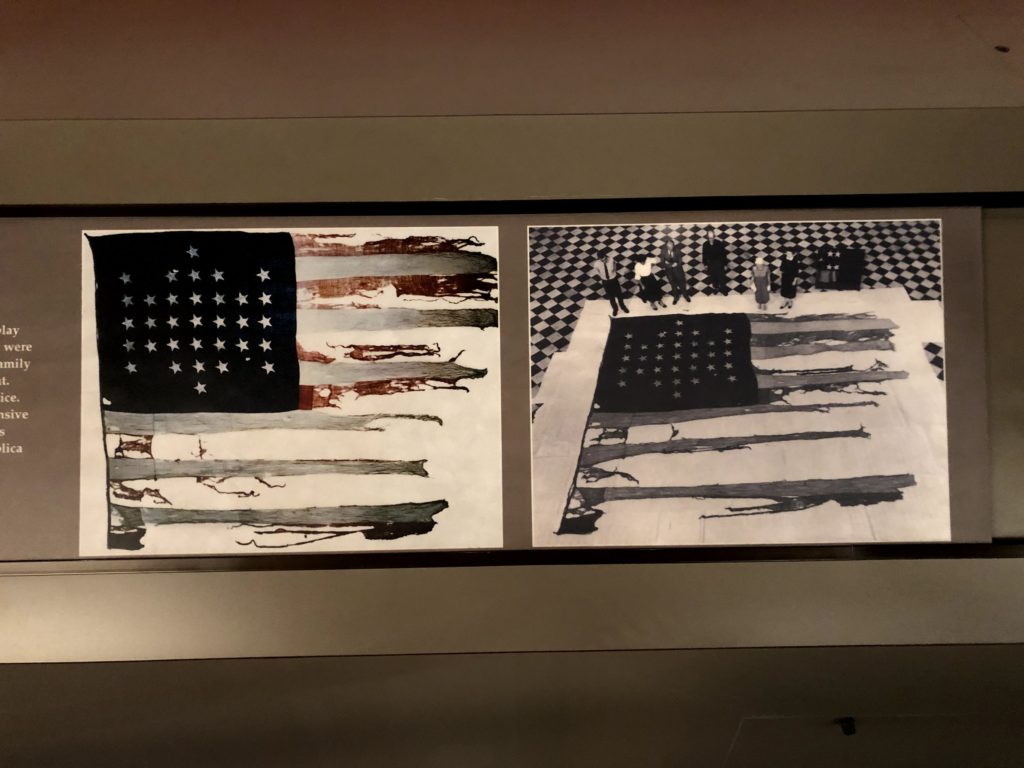
A custom-designed storage case protects the original garrison flag. Only a small section of this priceless relic of American history is displayed on any given day to minimize degradation.
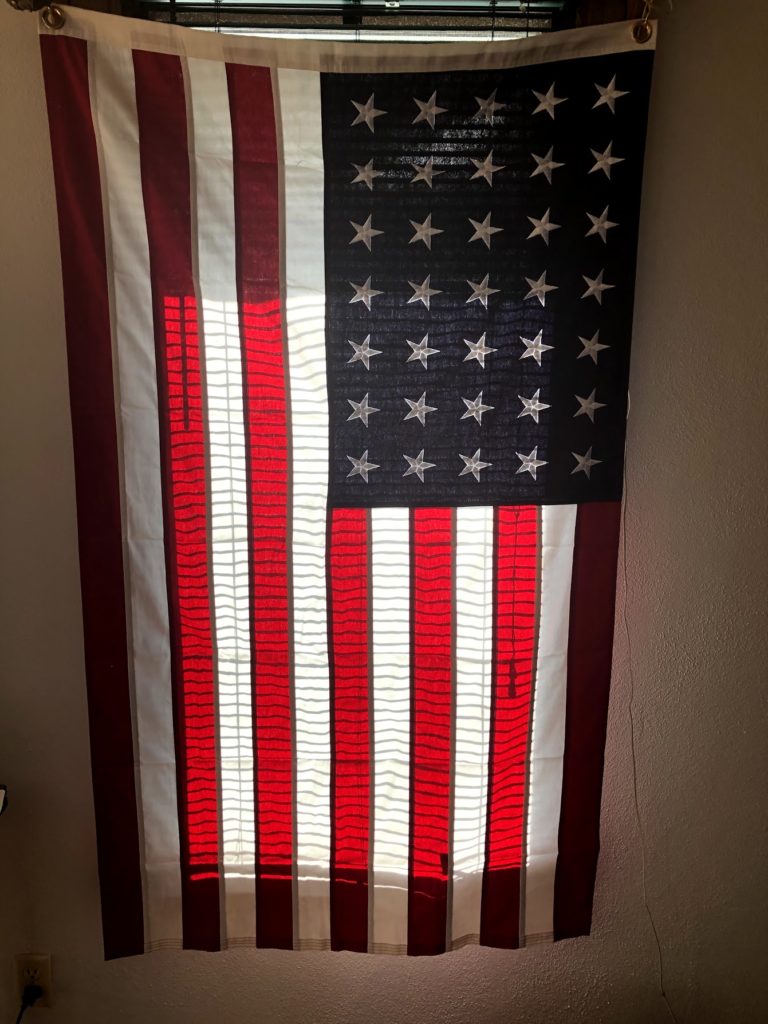
A 35-star flag flew above Fort Sumter when Federal forces again took control of the fort on February 18, 1865. Pictured above is a 35-star flag hanging near the desk where The Centennial was written, though the 35-star banner flown above Fort Sumter featured the stars in the circular “medallion pattern.” The star pattern in Old Glory varied among different patterns until standardized in 1912.
